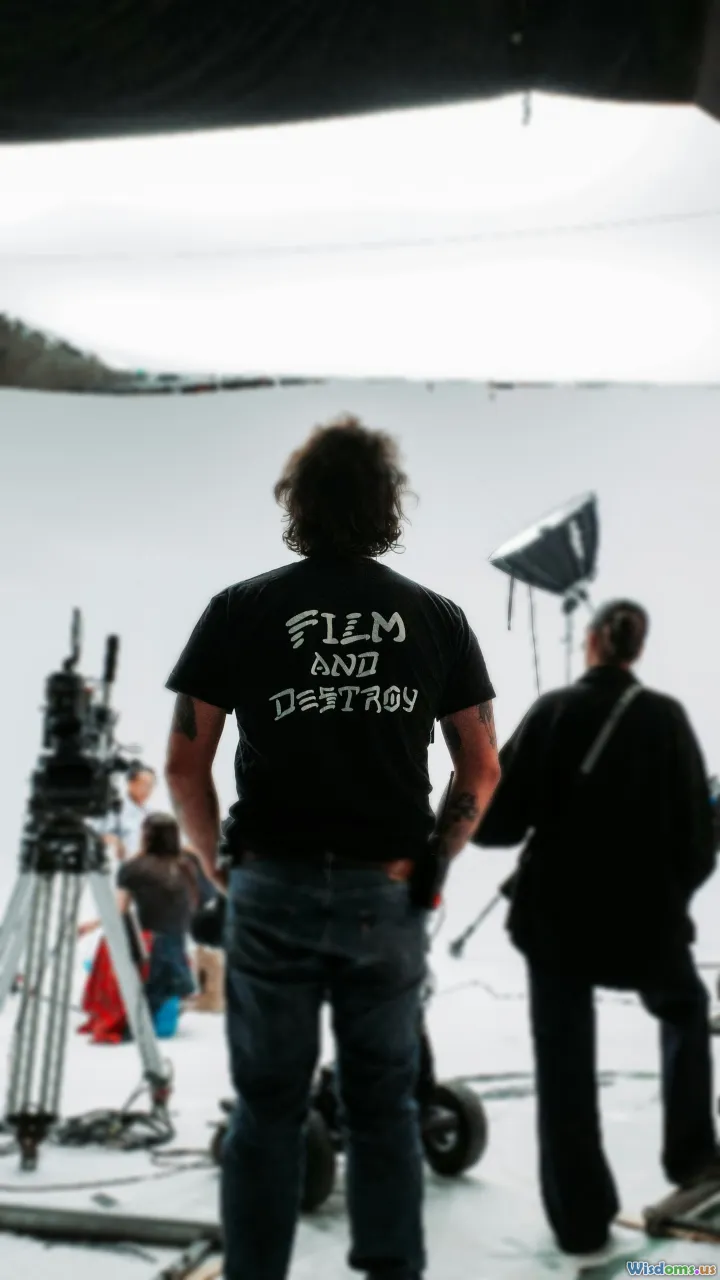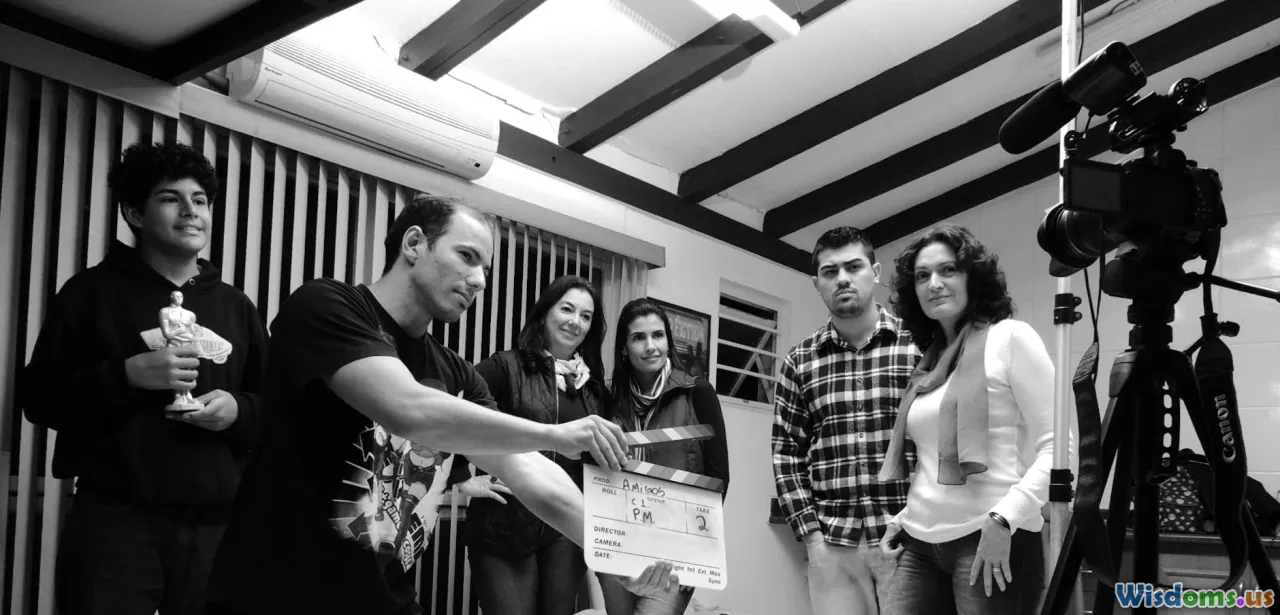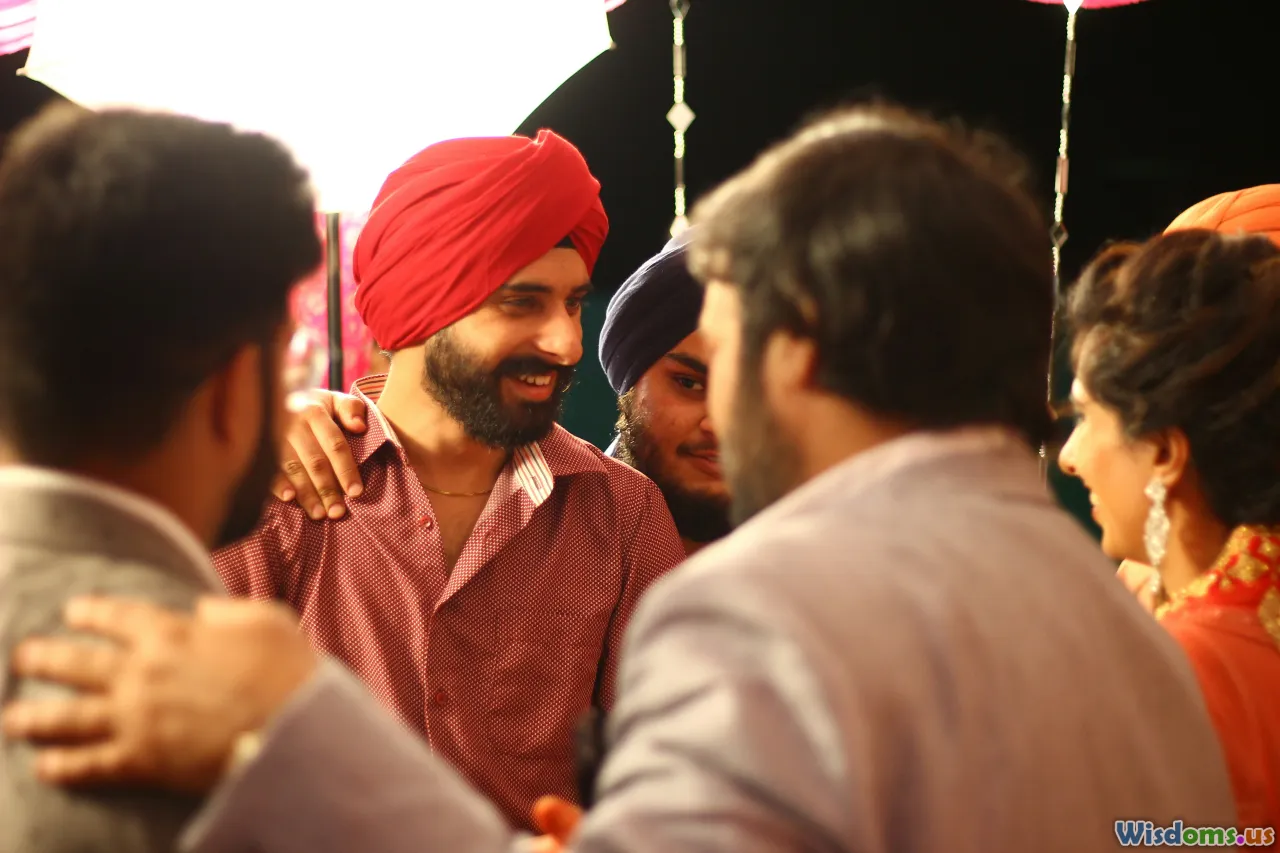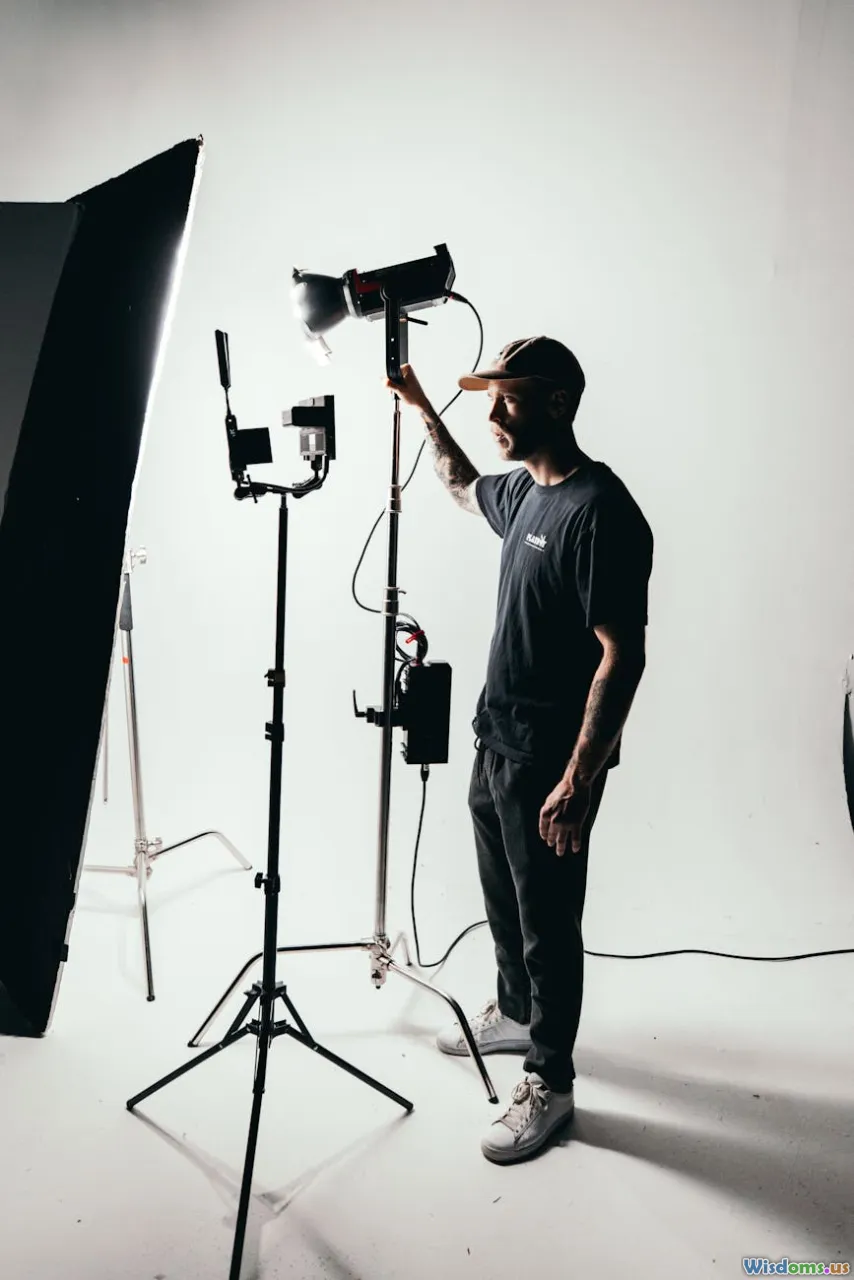
What Directors Wish Actors Knew On Set Days
14 min read Essential insights directors want actors to know for smooth, successful set days. (0 Reviews)
What Directors Wish Actors Knew On Set Days
The magic of filmmaking often happens between the lines of a script, in nuanced glances and rehearsed gestures. Yet, what occurs when the cameras stop rolling can be just as vital to a film's success. Directors rely heavily on actors for both artistry and professionalism during set days, but there are unspoken expectations many seasoned directors wish every actor truly understood. Discover what every director wishes actors knew—not just about profound performances, but about thriving within the pulse of a working set.
The Rhythm of the Set

Directors see the set as a living organism, with the day unfolding like a finely-tuned symphony. Timing and awareness are everything. Scenes are scheduled to optimize lighting, minimize downtime, and keep morale high. When actors grasp the importance of set rhythm, the entire production benefits.
Example: Television series often shoot upwards of six script pages a day. A single delay by any actor awaiting a last-minute line read or costume tweak may cause the entire crew—sometimes numbering over 100 people—to lose valuable daylight. At a 2021 panel, director Greta Gerwig recounted that the "magic take" often emerges after methodical repetition; disruptions and delays can scatter this creative focus.
Actionable Advice:
- Arrive early and be prepared with lines and blocking.
- Respect call times; these are carefully calculated to harmonize departments.
- Recognize that behind-the-scenes crew are laboring under immense time pressure to realize the collective vision.
Trust in the Collaborative Process

Great directors foster an environment where collaboration isn’t just welcomed—it's expected. Actors who respect the hierarchy and flow between departments help weave a stronger cinematic fabric.
On set, costume or makeup adjustments, script changes, or blocking notes may come unexpectedly. Directors often adjust on the fly in response to the set, location constraints, or last-minute inspiration. Actors receptive to input and flexible in their expectations can elevate an entire scene.
Case Study: When filming "Mad Max: Fury Road," Tom Hardy faced significant ambiguities in the story and character motivations. Director George Miller and Hardy engaged in numerous set-side brainstorms, adapting character intention and action in real time. Hardy’s receptiveness led to a performance lauded for both grit and emotional complexity.
Concrete Tips:
- Approach all notes—whether from the director, the script supervisor, or the DP—with an open mind.
- Cultivate adaptability; sometimes, the best moments happen off-script.
- Trust that notes are meant to elevate, never diminish, your performance.
The Importance of Listening

A director’s day is a storm of logistics, schedules, and creative juggling. For an actor, being an excellent listener on set bridges the gap between good and unforgettable work.
Listening goes beyond hearing cues; it's about absorbing subtext, understanding a director’s priorities, and reading the emotional pulse of the day.
Professional Insight: Director Ava DuVernay has spoken about actors who listen so actively they anticipate direction, make nuanced adjustments smoothly, and remain attuned to shifting dynamics.
Practical Approach:
- Pay attention during technical run-throughs—even when you’re not on camera.
- Reflect feedback in subsequent takes, showing you are responsive.
- Resist distractions (phones, excessive socializing) when key instructions are being shared.
Respecting the Technical Foundation

Performance might own the screen, but the technical crew ensures you look—and sound—your best. Directors appreciate actors who acknowledge this invisible labor.
Consider:
- The gaffer setting up a difficult lighting rig to capture a specific emotion in your closeup.
- The sound mixer holding for your quietest line, ensuring it isn’t lost to set noise.
Example: On "Birdman," actors navigated complex Steadicam rigging. Edward Norton and Michael Keaton rehearsed precise choreography down to stepping over cables, demonstrating two-way respect for the camera department’s art. This collaboration enabled the unbroken shots that define the film’s visual style.
Actionable Details:
- Learn basic marks and blocking terminology; hitting "marks" on the floor is crucial for focus and lighting.
- Understand how small adjustments—like peripheral eye line or hand gestures—can affect the shot.
- Query tactfully if unsure how your movements impact focus, frame, or sound.
Preparing Beyond the Lines

Directors cherish actors who approach their craft with thoughtful preparation extending far beyond memorizing dialogue.
Insight: Veteran directors frequently note that the best performers ask insightful questions about character backstory, relationship arcs, and the story’s pacing—early and often. This sets the stage for seamless execution on shoot days and reduces wasted time.
Real World Tip:
- Show up with script annotated, lines learned, and a working knowledge of the day’s scene objectives.
- Have backup costumes or props sorted if relevant (especially for indie productions where resources are limited).
- Bring a character “tool kit”—a playlist, an object, or images—to tune into role instantly during those hurried setups.
Embracing On-Set Etiquette and Culture

Every set, like every director, has a particular etiquette—one established through tradition, necessity, or individual leadership style.
Some common expectations:
- On many sets, silence is sacred while rolling.
- Respect is shown by not interrupting others’ performances, even with whispers.
- The joy of making film should never trump the seriousness of safe and efficient operations.
Industry Example: Director Patty Jenkins famously fostered a culture of mutual encouragement while directing "Wonder Woman," insisting on set-wide positive reinforcement that translated to palpable onscreen chemistry.
Tips for Actors:
- Avoid gossip or negativity, which can sap morale and focus.
- Practice gratitude—learn and use crew names; acknowledge unsung heroes on set.
- Understand the chain of command; if you encounter a problem, pursue solutions through the right channels (AD, producer, etc.).
Navigating Set Days with Professionalism

Professionalism sets the stage for repeated collaboration. Directors take note of actors who show up ready, foster a good attitude, and solve problems rather than causing them.
The pop culture tales of difficult stars—whose demands or diva antics slow production—contrast starkly with accounts of stars like Keanu Reeves, who has been extolled by crew for his patience and positivity. Directors will always recognize and remember which actors elevate the experience for everyone.
Best Practices Checklist:
- Punctuality is the bedrock of on-set trust.
- Maintain a consistent energy level throughout the day, especially for long shoots or night work.
- Minimize stressors: take care of your health, bring water and snacks, and rest when possible.
Advice to Remember: When in doubt, think about the kind of set energy you want to contribute—directors remember generous, committed professionals.
Maximizing the Director-Actor Dialogue

Open channels between directors and actors create the conditions for bold, risk-taking performances. But that communication thrives when both parties meet in the middle with respect and specificity.
Some directors offer highly prescriptive direction; others prefer broader themes or moods. As an actor, tailoring your questions can unlock deeper creative partnership.
Example: Viola Davis credits frequent director conversations for clarifying character objectives and deepening emotional resonance. Directors wish more actors would take the time to articulate their intentions, ask clarifying questions, and request another take when they know it can be better.
Dialogue Dos:
- Humbly request context for direction you don’t understand.
- If you need another take, ask assertively but politely.
- Offer thoughts with brevity—respect the director’s time while advocating for your craft.
Lessons from the Editing Room

Directors often wish more actors understood how footage is assembled—and what that means for daily performance.
In post-production, takes are watched frame by frame. Subtle changes in energy, posture, or gaze can make or break an edit. Sometimes, a director may ask for bizarre repetitions—like multiple takes with only a changed hand gesture—because they're combating anticipated challenges in the final cut.
Learning from Editors:
- Consistency between takes empowers seamless cuts.
- Hit marks and cues precisely during coverage—improvised flourishes can delight in a master shot, but may later cause headaches if not repeatable.
- Internalize that each iteration is an ingredient in an eventual composite performance seen by audiences.
The Value of Resilience and Joy

Filmmaking is grueling and exhilarating in equal measure. Directors gravitate towards actors who radiate enthusiasm, roll with unforeseen changes, and bring infectious positivity.
Anecdote: During the 2020 shoot of "The French Dispatch," filmmaker Wes Anderson noted how the ensemble cast patiently endured long hours, set changes, and multiple takes, infusing each setup with humor and dedication. The result? Onscreen magic colored by genuine camaraderie.
Personal Growth Insights:
- Remember why you love acting—rekindle your artistic spark on hard days.
- Build support networks among cast and crew.
- Approach each day with humility and excitement; directors value those who shine on camera and in spirit.
Success on set is more than just convincing emotion. For directors, the most valued actors are those who recognize the set as a community—a choreography of personalities, passions, and deadlines. Absorbing these inside lessons transforms actors from talented contributors to indispensable collaborators, elevating not just their performances, but the entire production journey.
Rate the Post
User Reviews
Popular Posts















